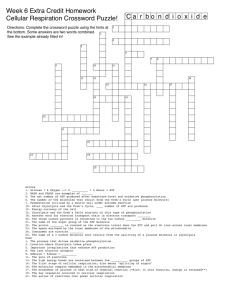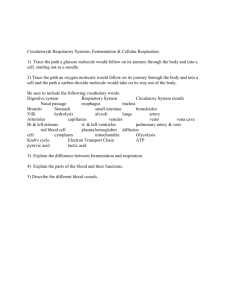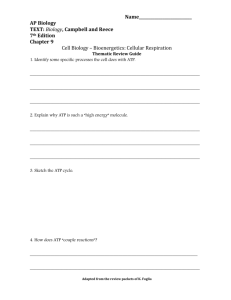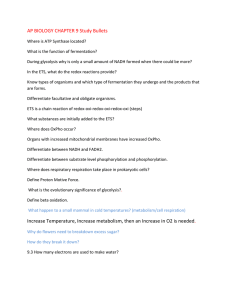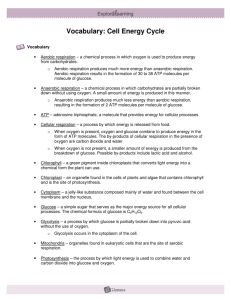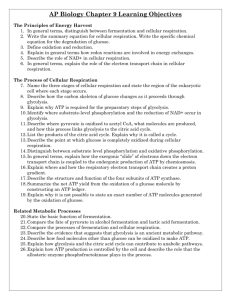CHAPTER 8: Cell Respiration Student Notes Definitions and
advertisement
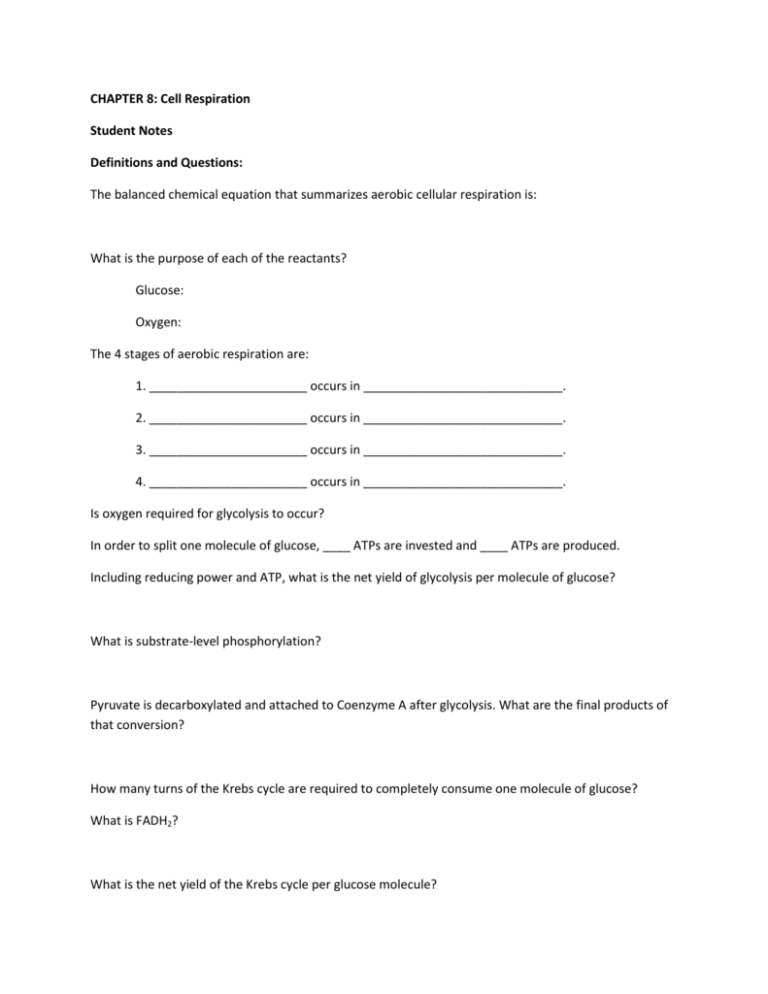
CHAPTER 8: Cell Respiration Student Notes Definitions and Questions: The balanced chemical equation that summarizes aerobic cellular respiration is: What is the purpose of each of the reactants? Glucose: Oxygen: The 4 stages of aerobic respiration are: 1. _______________________ occurs in _____________________________. 2. _______________________ occurs in _____________________________. 3. _______________________ occurs in _____________________________. 4. _______________________ occurs in _____________________________. Is oxygen required for glycolysis to occur? In order to split one molecule of glucose, ____ ATPs are invested and ____ ATPs are produced. Including reducing power and ATP, what is the net yield of glycolysis per molecule of glucose? What is substrate-level phosphorylation? Pyruvate is decarboxylated and attached to Coenzyme A after glycolysis. What are the final products of that conversion? How many turns of the Krebs cycle are required to completely consume one molecule of glucose? What is FADH2? What is the net yield of the Krebs cycle per glucose molecule? What is oxidative phosphorylation? Where in the mitochondria are the four complexes that make up the ETC located? As NADH and FADH2 are oxidized/reduced, protons are transported from the ____________________ to the __________________________. What enzyme allows protons to diffuse back into the matrix? What kind of diffusion is this? The diffusion of protons is exergonic/endergonic. How many ATP molecules are synthesized via oxidative phosphorylation? What is the total number of ATP molecules synthesized per molecule of glucose? Anaerobic respiration is: Fermentation is: What are the final products of lactic acid fermentation? What are the final products of alcohol fermentation? Chapter 8 Goals: 1. Understanding of the process of aerobic cell respiration a. 4 stages b. Major events of each stage c. Location of each stage d. Products of each stage 2. Ability to explain the differences between anaerobic respiration and fermentation.

